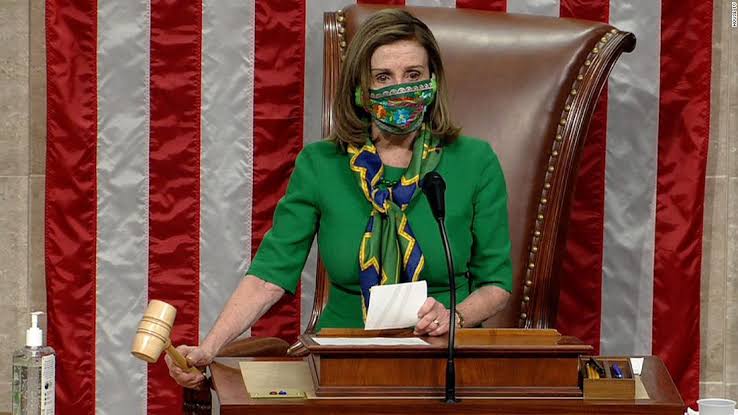President Joe Biden is poised on Wednesday for his first major legislative victory when the House of Representatives is expected to approve his 1.9 trillion dollars Coronavirus (COVID-19) relief package.
This which forecasters predict would turbocharge the U.S. economy.
The bill; one of the largest stimulus measures in American history, includes 400 billion dollars for 1,400 dollars direct payments to most Americans.
Also 350 billion dollars in aid to state and local governments for expansion of the child tax credit and increased funding for vaccine distribution.
Biden and his fellow Democrats who narrowly control Congress have described the legislation as a critical response to a pandemic that had killed more than 520,000 and thrown millions out of work.
“This bill attacks inequality and poverty in ways we haven’t seen in a generation,” Democratic Rep. Jim McGovern, who chairs the House Rules Committee’’, said on Tuesday before the House voted to advance the legislation.
Republicans argued that it was too costly and came as the worst phase of the largest public health crisis in a century may have passed.
Biden may not sign the bill until later in the week, while it went through final checks, according to people familiar with the White House’s plans.
The House was due to meet at 9 a.m. (1400 GMT) for two hours of debate before voting on the bill. The chamber last month passed an earlier version of the bill, but needed to meet again to approve changes made in the Senate over the weekend.
Congressional leaders do not expect a replay of the prolonged fights around earlier votes, which stretched past midnight in the House Rules Committee and went all night in the Senate in a session that ended on Saturday afternoon.
However, the Republicans could delay proceedings on Wednesday.
They could ask for a motion to send the bill back to the committee or a member could move to adjourn the House.
Right-wing Rep. Marjorie Taylor Greene has attempted three times since taking office in January to maneuver.
Although many Republicans supported the Coronavirus relief under former President Donald Trump’s administration, they had balked at the price tag for the Democratic package.
No Republican lawmaker voted for the bill in the House or Senate, although a Morning Consult/Politico poll last month showed that 76 per cent of voters and 60 per cent of Republican voters supported the measure.
Democrats hold a 221-211 majority in the House and, without Republican support, can afford to lose the votes of only a few of their members.
In the February vote in the House, two Democratic lawmakers voted against it.
One of them, Kurt Schrader, said he would now vote for the bill with the Senate changes.
Some Democratic lawmakers had criticised those changes, but Pramila Jayapal, head of the left-wing Congressional Progressive Caucus, has told reporters she thought members would back the legislation.
The massive spending push is seen as a major driver, coupled with a quickening pace of COVID-19 inoculations and a slowing infection rate, in a rapidly brightening outlook for the nation’s economy.
Private and public sector economists have been marking up their growth estimates, with Morgan Stanley this week pegging 2021 economic output growth at 8.1 per cent.
The Organisation for Economic Cooperation and Development on Tuesday predicted U.S. growth would top 6 per cent this year, up from an estimate of around 3 per cent just three months ago.
U.S. gross domestic product decreased 3.5 per cent in 2020, the biggest drop since 1946, as the pandemic depressed consumer spending and business investment. Recovery began in the second half.
Americans have already pocketed 1.5 trillion dollars in savings from the previous rounds of stimulus, and this one was coming as a rising portion of the population was finding it safer to resume activities such as dining out and traveling.
This has been off-limits for much of the past year, costing millions of service workers their jobs.

 Business1 week ago
Business1 week ago
 Latest4 days ago
Latest4 days ago
 Latest5 days ago
Latest5 days ago
 Business5 days ago
Business5 days ago
 News4 days ago
News4 days ago
 Crime5 days ago
Crime5 days ago
 Business5 days ago
Business5 days ago
 Politics5 days ago
Politics5 days ago

